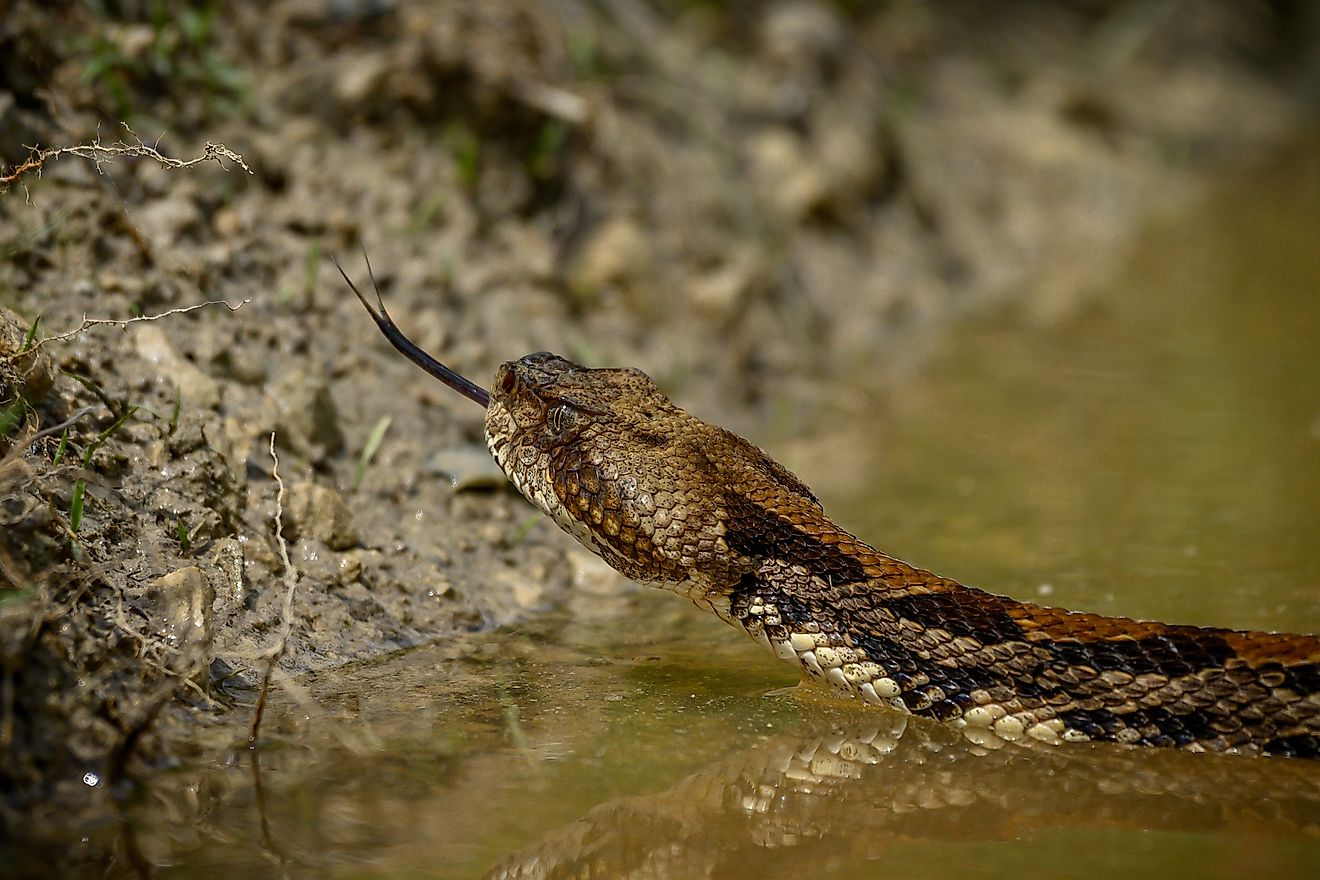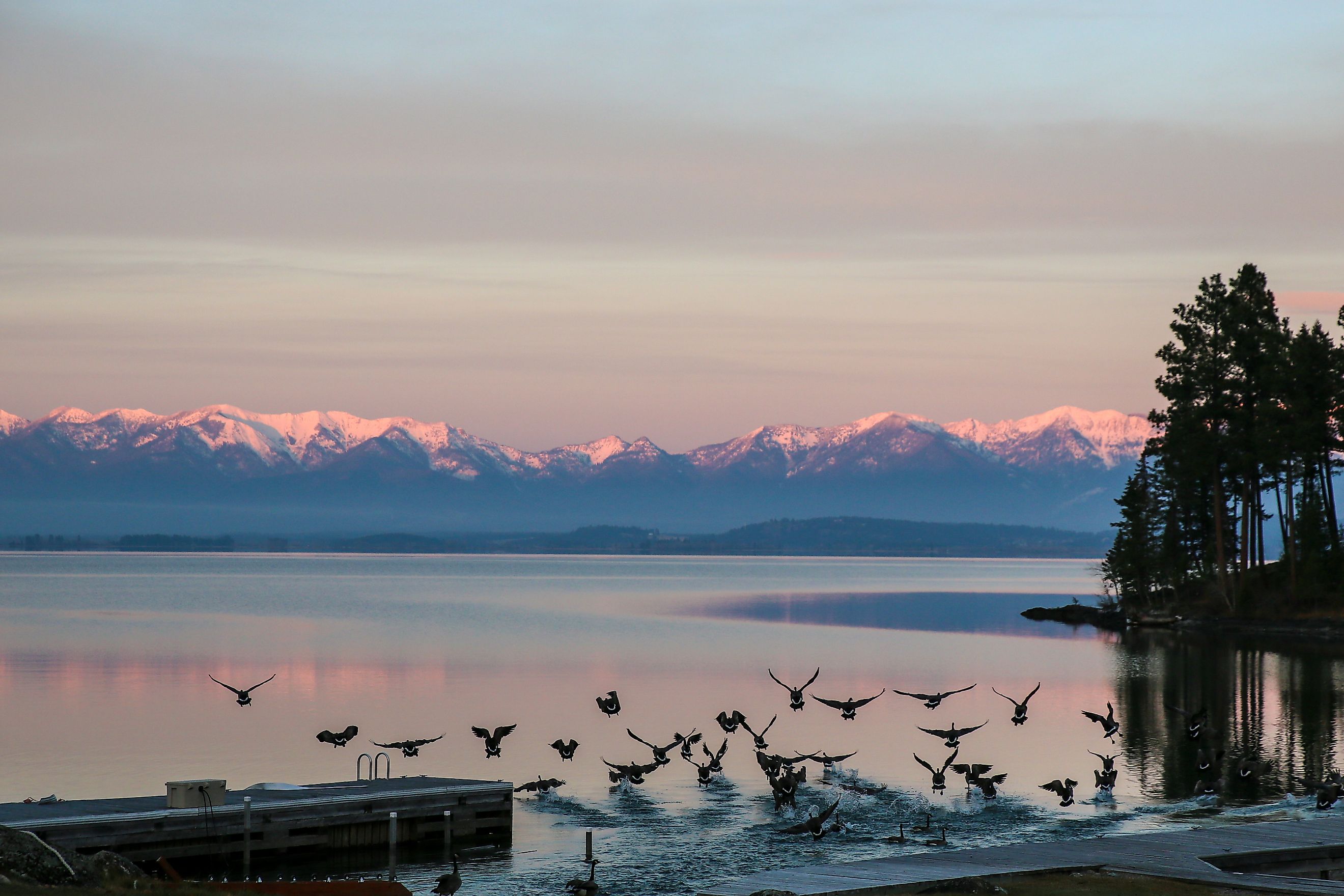
Flathead Lake, Montana
Flathead Lake is a large moraine-dammed lake situated in the northwestern corner of the US State of Montana. Flathead Lake is the most prominent naturally-occurring freshwater lake in the western United States. The Confederated Salish and Kootenai Tribes Flathead Reservation's perimeter includes the southern part of Flathead Lake. Thus, a tribal recreation permit is required for recreational activities in this area. Sailing, power boating, water skiing, swimming, fishing, picnicking, and camping are some recreational activities one can perform in and around Flathead Lake.
About The Flathead Lake
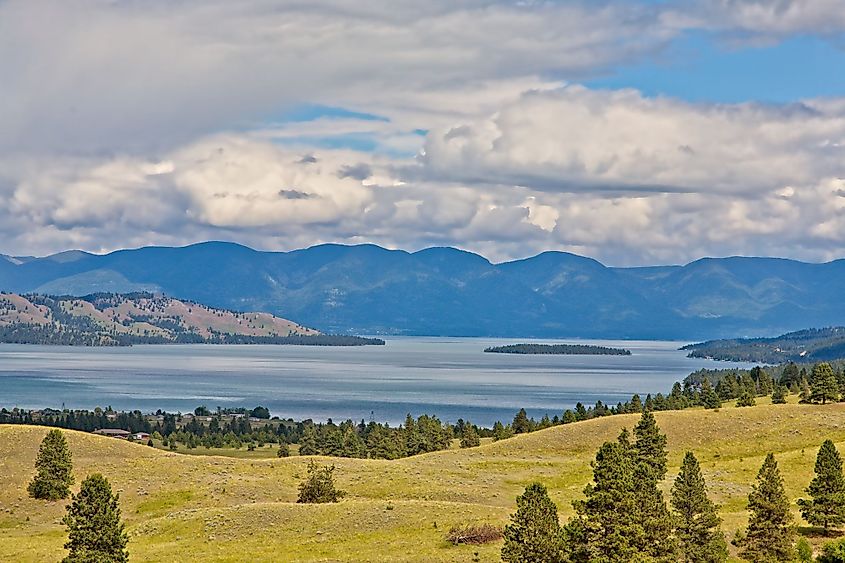
Flathead Lake is a remnant of the vast, ancient Lake Missoula, which was blocked by glaciers during the last interglacial period. This natural lake is located along the Flathead River's main channel, close to Bigfork and about 11 km south of Kalispell. Covering a surface area of 510 sq. km, Flathead Lake has a length of 43.9 km and a maximum width of 24.9 km. The lake has an average depth of 50.2 m and reaches a maximum depth of 113.0 m.
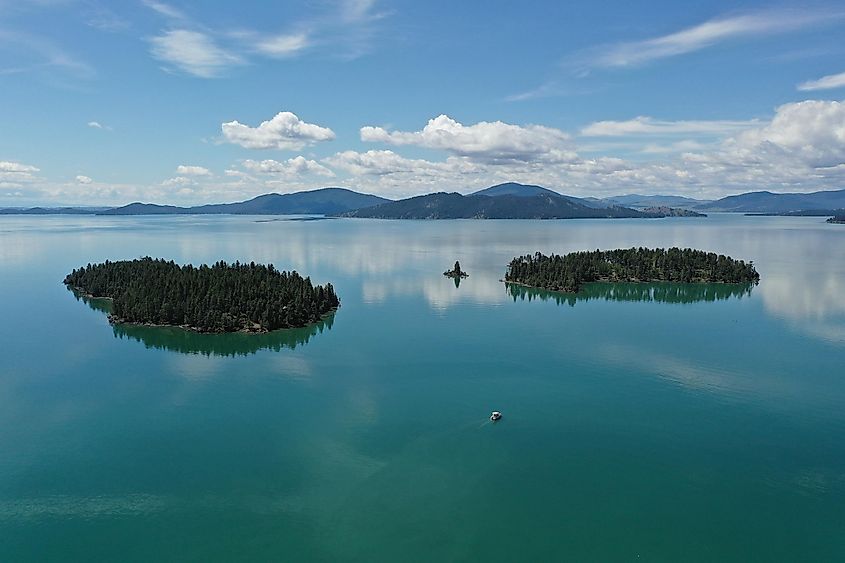
Flathead Lake is surrounded by two picturesque roadways that run down its curved coastline and is located in a scenic area of Montana, about 48 km southwest of Glacier National Park. The U.S. Route 93 runs along the west side, and Route 35 runs along the east. The Mission Mountains and Salish Mountains both border the lake's eastern and western shores, respectively. With the Pacific Ocean over 640 km to the west, the Flathead valley, which was created by the glacial damming of the Flathead River, experiences a very moderate temperature for an area located this far north. Flathead Lake also contains several islands, of which Wild Horse Island, covering 2,164 acres, is the biggest one.
History Of Flathead Lake
This body of water was formerly called "Salish Lake," after the Salish Indians. They were referred to as the Flathead Indians by early European explorers like David Thompson due to a misunderstanding of early Native American sign language. It is a popular myth that the word comes from a head-flattening custom more prevalent among tribes like the Chinook. There is however no proof that the Salish ever practiced this tradition. The Salish were primarily relocated to the Flathead Indian Reservation, situated at the lake's southern end, since the late 19th century. The Kerr Dam, which provides hydroelectricity, was built in 1930 near the mouth of Flathead Lake on Polson Bay. The dam slightly raised the lake's level.
Ecology Of Flathead Lake
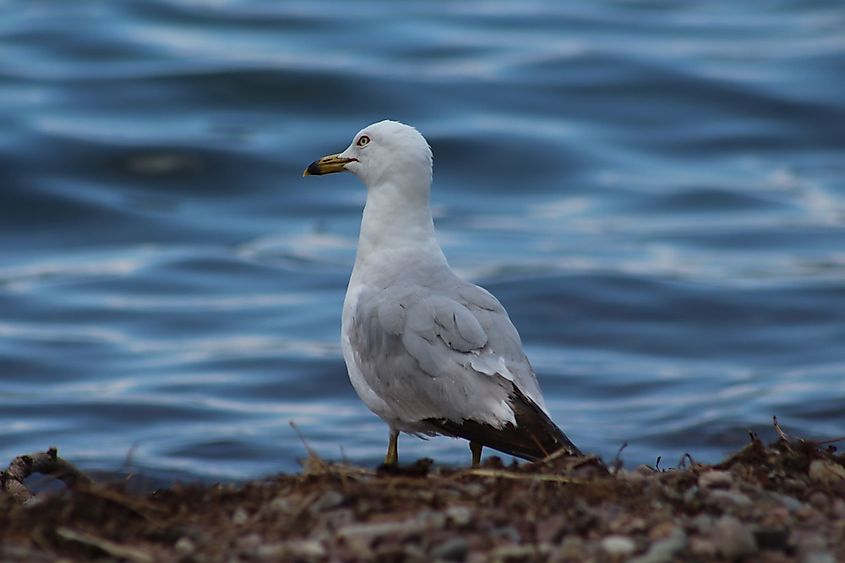
Along with non-native lake trout, yellow perch, and lake whitefish, the Flathead Lake is home to native bull trout, and cutthroat trout. According to locals, other aquatic wildlife, including sturgeon and the Flathead Lake Monster, have also been spotted in the lake. The Montana Department of Fish, Wildlife, and Parks planted the non-native opossum shrimp in the Flathead drainage basin to promote the generation of kokanee salmon. This whole process played a part in the lowering of the population of local trout species.
Threats To Flathead Lake
The harmful effects of nitrogen and phosphorus on lakes may change their crystal-clear, pure waters. Researchers at the University of Montana's Flathead Lake Biological Station have studied nearly 40 years' worth of nutrient dynamics in Flathead Lake. This rare dataset, compiled by the FLBS Flathead Monitoring Program, shows a persistent nitrogen and phosphorus imbalance that probably has important biological effects in Flathead Lake and surrounding bodies of water. Flathead Lake is extremely vulnerable to nutrient additions caused by people because of the low background level of naturally occurring nutrients.
Concerns were expressed in the 1970s and 1980s about such nutrient imports into Flathead Lake that were caused by people and the ensuing algae blooms. Following this, measures to reduce nutrient levels in the Flathead watershed were implemented, as a result of research by FLBS scientists. These measures included one of the nation's most thorough bans on phosphorus-containing laundry detergents and a multimillion-dollar upgrade of regional wastewater treatment facilities.
